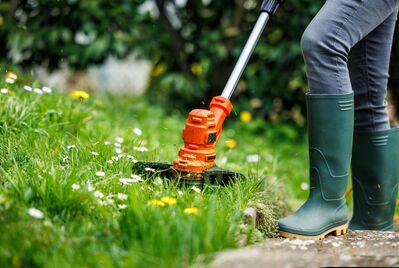How to make your home more energy efficient in 2025

Making your home more energy efficient in 2025 is not just an environmentally responsible choice—it’s a smart financial move, particularly in today’s cost-of-living crisis. With rising energy prices, reducing your household’s energy consumption can lead to significant savings on your monthly utility bills, freeing up money for other expenses or future investments.
In this blog, we’ll explore practical, cost-effective strategies to optimise your home’s energy use for a greener, more efficient home that’s kinder to both your wallet and the planet.
1. Upgrade to energy-efficient appliances
Despite the initial upfront cost, replacing old appliances with energy-efficient models can significantly reduce energy consumption. Look for appliances with high energy ratings, as they use less electricity and can lead to substantial savings over time.
2. Install smart thermostats
Investing in smart thermostats allows you to have more control over your home's heating and cooling systems. By giving you the ability to control your home’s temperature remotely, these systems help lower your energy costs while reducing your environmental impact. You can set automated schedules to maintain the perfect temperature throughout the day, and some models even detect when you’re returning from work or school, adjusting the climate to ensure a comfortable welcome.
3. Enhance insulation
Proper insulation in walls, attics, and floors helps maintain indoor temperatures, reducing the need for excessive heating or cooling. Upgrading insulation can lead to significant energy savings in the long run, especially in older homes.
4. Seal leaks and drafts
Identify and seal any leaks around windows, doors, and other openings to prevent heat loss. Using draught excluders and weather stripping can be effective solutions to keep your home airtight.
5. Install energy-efficient lighting
Switching to LED bulbs can cut lighting energy use by up to 75%. Additionally, incorporating motion sensors can further enhance efficiency to ensure no lights stay on unecessarily and wasting electricity.
6. Consider renewable energy sources
Investing in solar panels or other renewable energy systems can reduce reliance on grid electricity with significant long-term financial savings. While the initial investment may be substantial, you can check for existing government incentives or schemes that can help you make your home greener and more energy efficient without breaking the family finances.
7. Maintain HVAC systems
Another worthwhile investment to cut back on energy costs is ensuring your heating, ventilation, and air conditioning systems remain in good condition to continue to operate as efficiently as possible. Make sure to keep changing filters regularly and when needed, consider getting regular professional check-ups to prevent energy wastage through wear and tear.
8. Utilise smart power strips
Even when turned off, appliances can draw power such as when left on standby or in sleeping mode. Smart power strips cut off electricity to devices when not in use which can help eliminate "phantom" energy usage.
9. Adjust water heating practices
Lowering the thermostat on your water heater to 60°C or below can also help save energy. Additionally, being mindful of hot water use and insulating water heaters and pipes can contribute to making your home more energy efficient over time as well.
Implementing these strategies can reduce both your environmental footprint and utility expenses, while making your home more energy efficient. Staying informed about the latest technologies and practices in energy efficiency will also enhance your home's performance in the years to come.






